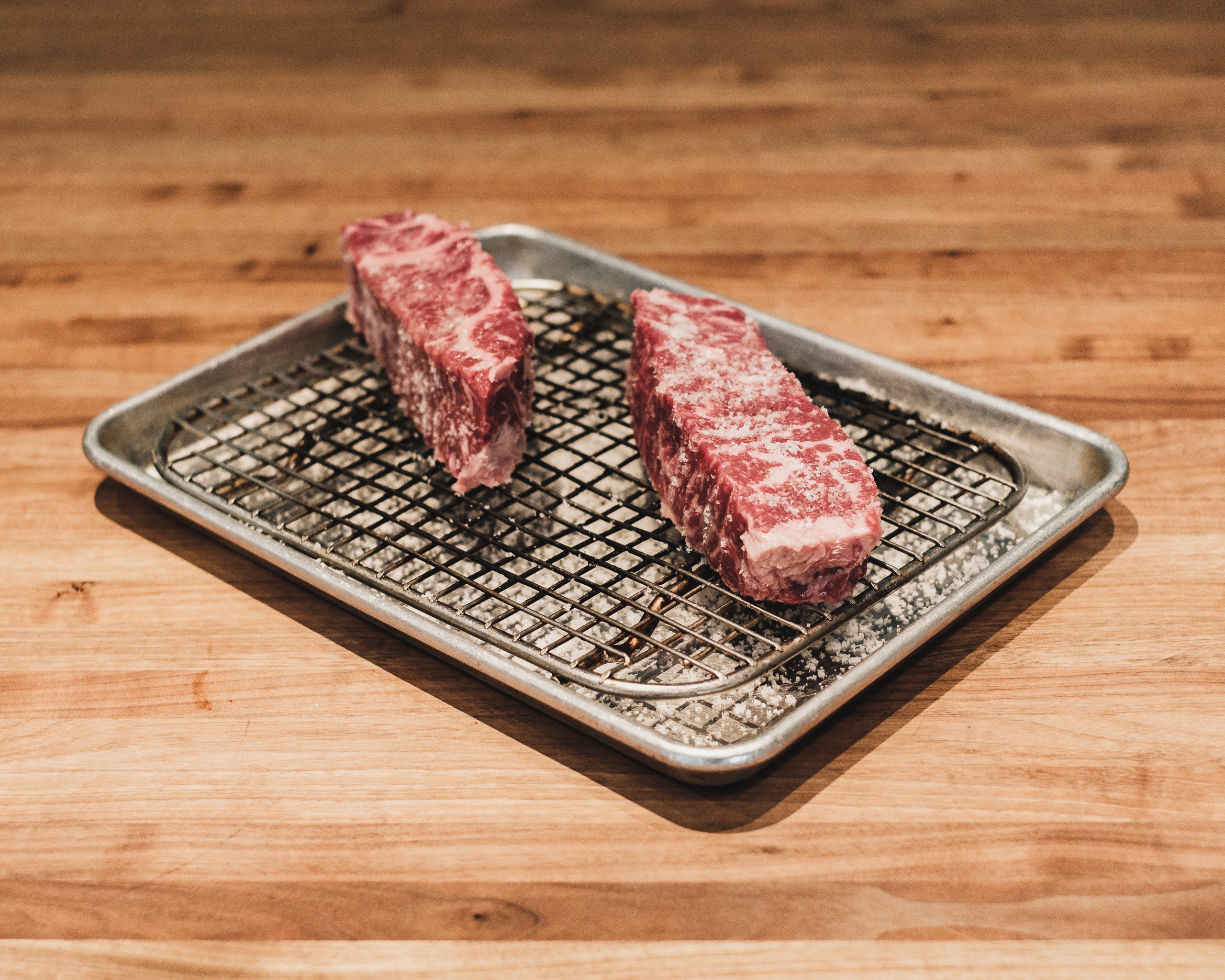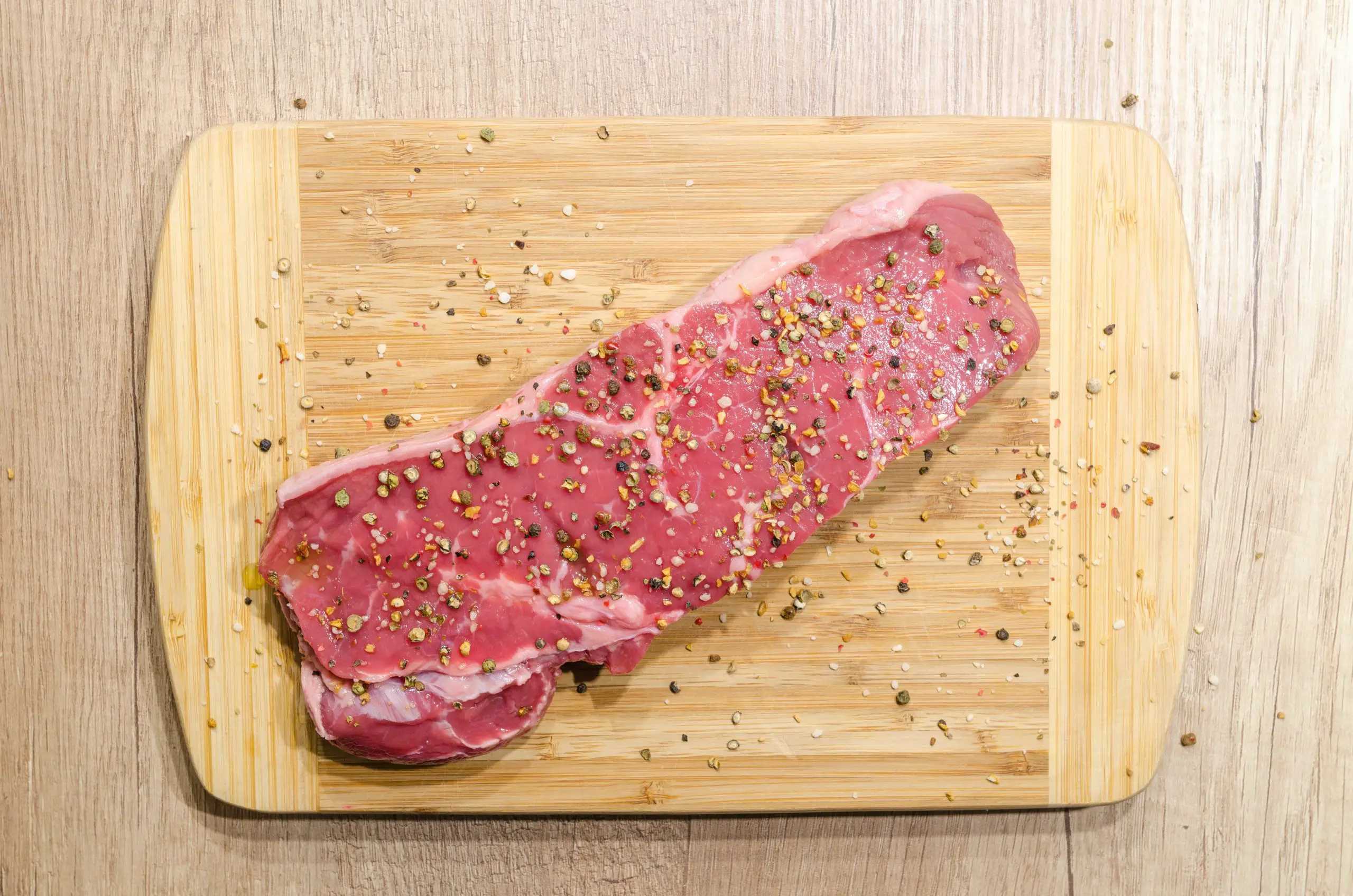If you need to defrost meat, you can do so safely and easily. Several methods you can use, depending on your meat type. These methods include defrosting it in your refrigerator, microwave, and cold or hot water.
In this post, we’ll go over the safest defrosting techniques for meat and handling and storage advice for thawed meat to lower the chance of contracting a foodborne illness. It must be handled and stored appropriately to guarantee that thawed meat is safe to consume. Food poisoning and bacterial development are more likely when meat is thawed in hot water or at room temperature.

How to Defrost Meat Safely?
The appropriate approach will depend on the size, type, and time you have available for defrosting the meat. The best ways to defrost meat are in the refrigerator, in cold water, and the microwave (for small cuts of meat only). To reduce the risk of illness, utilize thawed meat within 1-2 days, or refreeze it for later use.
Whatever method you select, it’s critical to handle and store thawed meat safely to reduce the risk of foodborne illness. Use the meat within 1-2 days after it has been thawed and placed in the refrigerator until you are ready to prepare it. To prevent cross-contamination, thoroughly wash your hands before and after handling the meat. It’s crucial to safely defrost meat before cooking. Here are four safe methods for defrosting meat:
Method 1. Thawing in the Refrigerator
The safest way for defrosting meat is this one. Place the meat in the fridge and let it slowly defrost. This approach allows the meat to thaw gradually and uniformly, reducing the possibility of bacterial growth. Depending on the amount of meat, this process may take several hours or even a day.
Method 2. Thawing in Cold Water
Put the meat in a plastic bag that can’t leak and dunk it in a sink full of ice-cold water. To maintain the coldness, change the water every 30 minutes. This process is quicker than thawing in the refrigerator but demands more focus.
Depending on how much meat there is to cook, this process could take anywhere from 30 minutes to several hours. This approach has the advantage of thawing the meat faster than in the refrigerator.
Method 3. Thawing in a Microwave
Only small slices of meat and poultry are advised for this procedure. Utilizing the “defrost” option per the manufacturer’s recommendations, place the meat in the microwave. After it has thawed, cook the meat right away. Although this method only works for tiny slices of meat, it allows the flesh to defrost fast.
Method 4. Thawing in a Room Temperature
The normal range of room temperature is between 68 and 77 degrees Fahrenheit, which is in the danger zone for temperatures where the growth of hazardous germs is most likely to occur.
As a result, you should frequently check the temperature of the defrosting meat. Once the meat reaches a temperature of about 40 degrees Fahrenheit, transfer it to the refrigerator and continue the defrosting process inside.
Method 4. Thawing in Hot Water
The meat can be kept in its original packaging or another leak-proof bag and placed in a basin of hot water to thaw rather than being defrosted in a bowl of cold water. Because of how rapidly this procedure works, even if the meat hits the danger zone temperature, it doesn’t stay there long enough for dangerous bacteria to develop.
It’s best practice to plunge the meat into a bowl of cold water as soon as it has finished thawing in hot water; this will swiftly lower the temperature back to 40 degrees Fahrenheit. The meat will still be chilly enough to remain outside the danger zone, but there is no risk of it freezing again at that temperature.
Additional Suggestions for Defrosting Meat Safely:
- Ahead of time: Planning is crucial because it can take a while for meat to defrost in the fridge safely. Take a certain type of meat out of the freezer the night before or the morning if you know you’ll be cooking it, so it has time to thaw.
- Date and label your meat: Every piece of frozen meat should be marked with a date so you know how long it has been there. This will enable you to decide if the meat is still suitable after thawing.
- Thawed beef shouldn’t be refrozen: Meat shouldn’t be refrozen after it has been defrosted. This is because its quality may be affected after the meat has been thawed and subjected to cold temperatures again.
- To prevent bacteria: Using hot water to defrost meat is also not advised since the outside layers of the meat may become warm enough for bacteria to develop. In contrast, the inside of the meat stays frozen.
- Use to Food thermometer: Use a food thermometer to check that thawed meat has reached a safe internal temperature before cooking it. This will kill any bacteria that may have developed during the thawing process.
Is it Safe to Defrost Meat on a Counter?
According to the United States Department of Agriculture (USDA), meat should not be defrosted on the counter, as it may take too long for the meat’s interior to reach a safe temperature, which could lead to the growth of bacteria.
The maximum time each piece of thawed meat should spend at room temperature is two hours. Bacteria that may have been present before freezing may grow if the meat starts to thaw and warms up to more than 40 °F.
Is Cooking Frozen Meat Acceptable?
You may cook frozen meat immediately when you’re truly pressed for time. Whether you like it or not, cooking fresh-out-of-the-freezer blocks of ground turkey, thick chunks of chicken, and slabs of ice-cold steak are safe.
Please avoid using the slow cooker for frozen meat because it can take too long to defrost and become dangerous. There are better ways to get perfectly seared meat or golden-crisp skin because it takes longer to cook. It is a choice that is always available to you, even when fully thawed protein isn’t.
How Long should Meat Defrost in a Fridge?
Meat takes a different amount of time to defrost in the refrigerator, depending on its size and type. In the refrigerator, defrosting meat typically takes 24 hours for every 5 pounds. A 10-pound turkey will take around 2-3 days to thaw compared to a 2-pound roast, which will take about 8-9 hours.
It is important to remember that larger cuts of meat, like roasts and turkeys, may take longer to thaw than smaller cuts, like chicken breasts or steaks. Additionally, planning and giving the meat enough time to thaw thoroughly before cooking is critical.
It is preferable to put meat in its original packaging on a plate or in a container to catch any juices that may leak while it defrosts securely in the fridge. To avoid cross-contamination, the meat should be stored in the refrigerator on the lowest shelf, far from things ready to eat.
How can you Tell if Defrost Meat has Gone Bad?
The best action is to throw the meat away and not consume it if you see any of these symptoms. A food thermometer should be used to check if the meat has achieved a safe internal temperature before cooking to prevent the growth of bacteria while handling raw meat. Several indicators suggest that defrosted meat may have been spoiled:
- Bad smell: If the defrosted meat has a strong, foul scent, that is one of the clearest symptoms that it is bad. This can indicate the development of bacteria.
- Discoloration: Meat that has been defrosted may be ruined if it has a brown or greenish appearance. Reddish or pinkish should be the hue of fresh meat.
- Sluggish or sticky in texture: The meat may be spoiled if the surface feels slimy or sticky after it has been defrosted.
- Off-taste: Meat that has been defrosted may be ruined if it tastes or smells strange.
What Happens if you Consume Spoiled, Defrosted Meat?
Food poisoning can result from eating damaged, defrosted meat. The type and quantity of germs or toxins present in the rotten meat, the person’s age, general health, and how much they have eaten can all affect the symptoms of food poisoning. Nausea, vomiting, cramping in the stomach, diarrhea, fever, and weakness are all typical signs of food poisoning.
For small children, senior citizens, and those with compromised immune systems, severe food poisoning can result in dehydration. It’s critical to seek medical assistance immediately if you think you may have eaten rotten, defrosted meat. Your physician can assist you in choosing a course of therapy and avoiding additional problems.
It’s critical to handle raw meat with care, store it correctly, and cook it to a safe internal temperature to eradicate any potential bacteria to prevent food poisoning. Additionally, it’s crucial to steer clear of meat that smells or looks terrible, has been sitting around at room temperature for an extended period, or has both.
Conclusion
In summary, safely defrosting meat is a crucial step in cooking. Meat can be thawed using various microwave, cold water, and refrigeration techniques. The most secure and advised technique is to defrost food in the refrigerator.
Use a food thermometer to check that the meat has achieved a safe internal temperature during cooking, and take extra care when handling raw meat to prevent the growth of bacteria. You can prepare dishes using thawed meat that is tasty and secure if you adhere to these rules.
